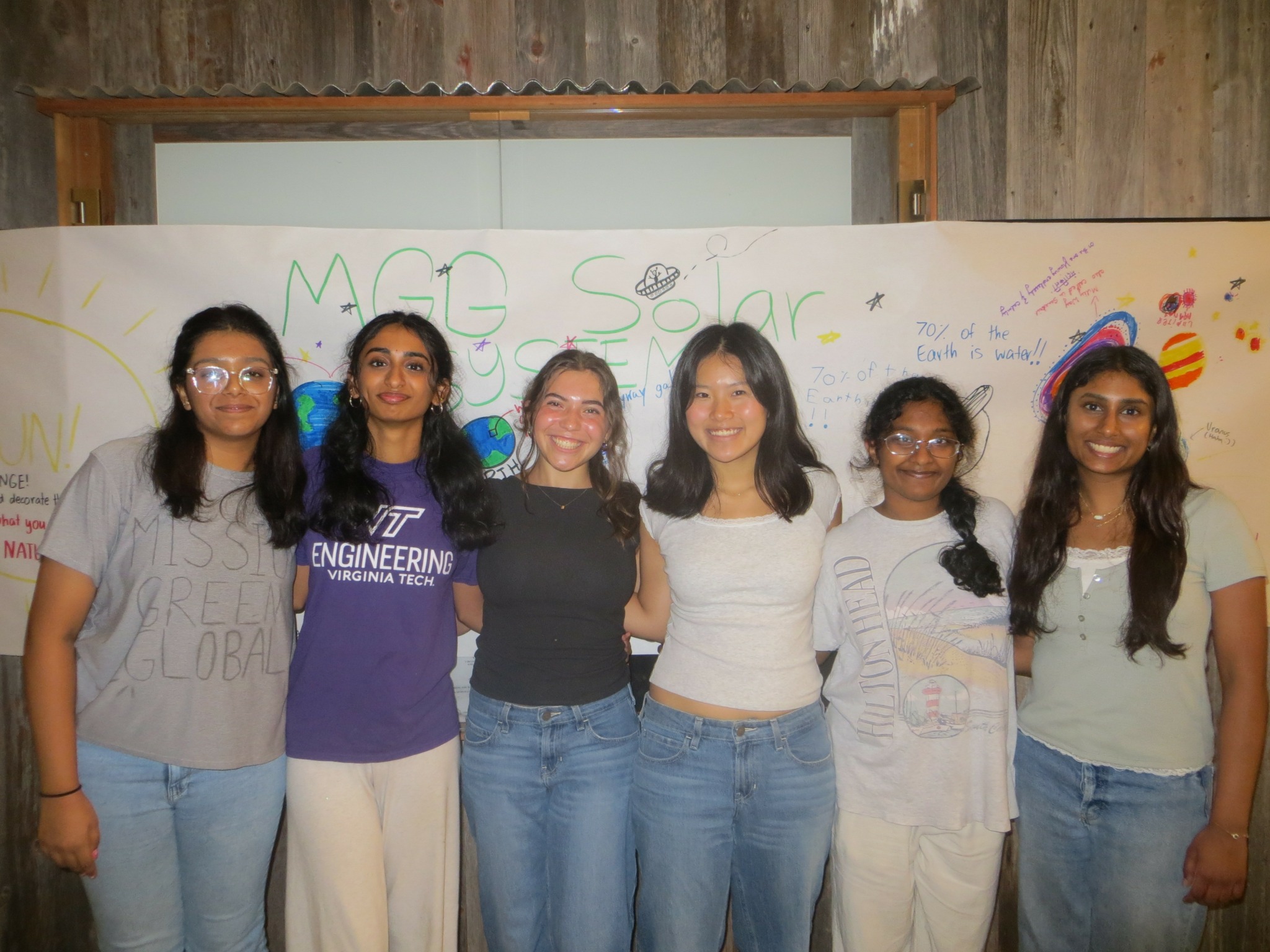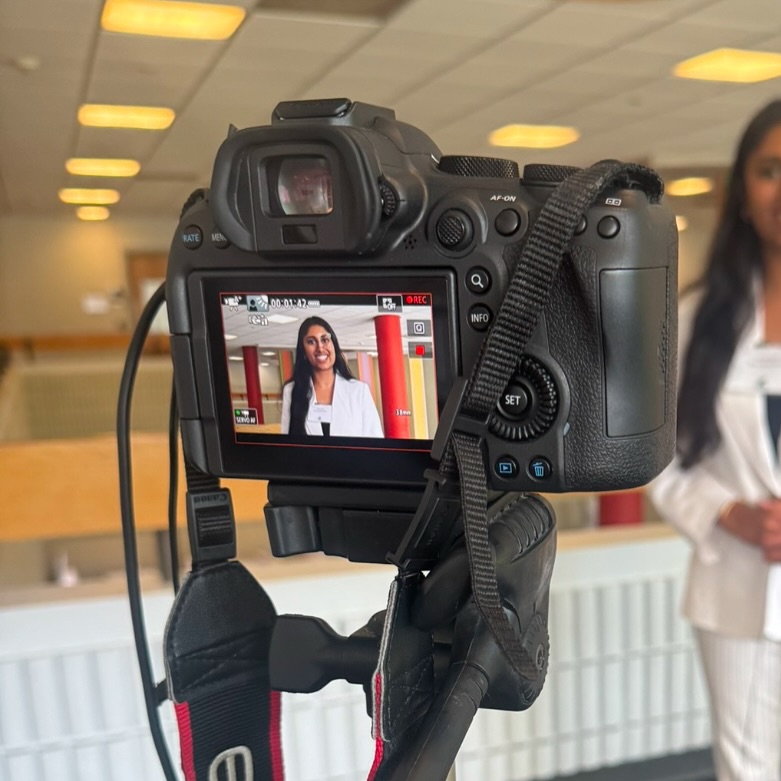We were lucky to catch up with Arushi Surve recently and have shared our conversation below.
Hi Arushi, thanks for joining us today. Let’s kick things off with your mission – what is it and what’s the story behind why it’s your mission?
Mission Green Global was started with the belief that climate change doesn’t wait. And, therefore, climate action shouldn’t wait either.
Growing up, I already knew I was an environmentalist. From recycling, reading about endangered species, and vowing never to take a bubble bath again in first grade, I knew I wanted to help conserve the environment. But all the real work? Making governmental change, scientific change, social change? I told myself it was for me when I was older.
That all changed in high school when I took a trip to the mountains in India. We were hiking when I saw a valley of littered plastic bottles. I enlisted local tourists and my family to help pick them up, resulting in a short, small movement that made me realize: I could make a difference now.
As soon as I came back, I started looking into UN SDGs, climate organizations, and local protests. But a sinking realization hit me: all the programs either had a minimum age, required lengthy or during-school participation hours that didn’t fit into my schedule as a full time student, or were far from my home, requiring commute that as a child with full-time working parents, was impossible for me.
That’s when it struck me. I could create my own opportunity. One where I could serve the environment, and hopefully, one day, thousands of other students in similar situations, passionate about the environment but looking for accessible opportunities could create a difference.
Mission Green Global’s mission has remained simple: the young generation shouldn’t have to wait to have a voice and participate in decisions in the environment spectra that ultimately affect them in the near future. Half the world’s population is under 30. Youth don’t just have unique voices—they have many of them. Youth don’t just contribute to climate action—they have the capacity to lead it.
Now we’re in a journey to make sure youth everywhere can make a difference in the environment, by participating in our easy-accessible, inclusive programs. From in-person to online, art to tech, we work to integrate the environment in all aspects of our lives, and show youth how they can do the same. That’s why we believe in a holistic approach to the environment. Instead of focusing on just one aspect or issue of climate action, we integrate petitions, murals, hackathons into topics like marine conservation to deforestation and plastic pollution.
Our approach combines grassroots event organization with strategic educational workshops led by youth to drive measurable environmental change at scale. And I hope to show all youth that they can conserve the planet and play a part in their future.

Arushi, before we move on to more of these sorts of questions, can you take some time to bring our readers up to speed on you and what you do?
I’m a passionate environmentalist and aspiring aerospace engineer who hopes to lead sustainable space exploration efforts that prioritize saving our planet before inhabiting others. I’m a former NASA Intern, a NASA Space Waste Challenge Researcher, New York Academy of Sciences Intern and University of the Basque-Spain researcher, where I published work on natural composite materials. My most proud role is leading Mission Green Global (MGG). MGG is more than a project to me: it’s how I fight for the environment, using a united belief to foster collaboration, which has transformed my voice into a chorus.
I’m also passionate about accessibility. Environmentalism shouldn’t be limited to those with resources. I want to bring sustainability education to communities that have never had that chance. Climate advocacy is not just about solving a crisis—it’s about uniting people and giving them tangible ways to protect what they care about.
Ultimately, I care about turning belief into action and ensuring that young people around the world know that their voice matters in shaping a greener future.
As the founder of Mission Green Global, an international youth-led nonprofit driving climate action in over 35 countries, I’ve seen firsthand the power of young people to lead transformative change. Whether facilitating ocean sustainability workshops or collaborating with global partners to promote reforestation and environmental equity, I’ve worked to ensure that underrepresented youth have both a voice and a platform in shaping our future. Additionally, as a scientist, engineer, and researcher, artist, and podcast host, I love interdisciplinary thinking that can get every youth involved: whether designing tote bags, sharing climate stories, or creating technology that cleans oil spills, I believe there’s a place for every youth (and adult too!) in climate action.
Mission Green Global is an International 501(c)(3) with 58 chapters across 37 countries. We are entirely 18 and under led, and have programs serving issues across climate action: from air pollution to marine life. We believe in a holistic approach, using different types of programs-from workshops and podcasts to film festivals and cleanups.
I’ve been an environmentalist my whole life, but it wasn’t until 10th grade where I realized I could actively fight for it. We were on a trip in the mountains of India, where I saw hundreds of plastic bottles littered in the valley we were hiking. I enlisted my family and passing tourists to help pick them up. Coming back, I first realized I wanted to get involved in climate action now, and not wait until I was older. However, I ran into the same problems younger youth face everywhere: programs were too far, designed for older participants, or too rigid for full-time students. So, at 15, I didn’t wait—I built my own solution. Mission Green Global is a place where all youth can get involved in climate action and earn service hours, from anywhere across the world in multiple formats across multiple interests (coding, art, speaking, writing) across multiple issues (animal welfare, light pollution, plastic).
My long-term vision for Mission Green Global is to build the world’s largest, most accessible youth-led climate network—one that doesn’t just talk about change, but creates it at the community level across every continent.
Ultimately, I hope to institutionalize youth involvement in environmental decision-making—bridging the gap between grassroots movements and global policy. I aim to collaborate with governments, NGOs, and educational systems to integrate climate literacy and youth activism into core curricula and civic programs worldwide.
My goal isn’t just a greener planet—it’s a more equitable and united one, where youth are no longer seen as future leaders, but as the leaders of now.
Do you have any insights you can share related to maintaining high team morale?
I started Mission Green Global with my best friends. In some ways, that was both harder and easier than managing a team unfamiliar to me.
Working with friends is absolutely a dream. They know you, they share your passion, and they support you no matter what. But at the same time, turning a friendship into a professional relationship—“Hey, can you please work on this?” or “I really need this done by Monday”—is extremely challenging. How are you supposed to tell your friends what to do, or when to do it? Making that ask was definitely one of the most difficult parts of managing my team.
Over time, instead of trying to transform friendships into a professional relationship, I created two separate relationships. When we’re working on Mission Green Global, we’re professional and team-oriented. But outside of that, we still laugh, support each other, and enjoy our friendship. If anything, that balance makes working on Mission Green Global more fun. My advice: stick to a schedule, and have everything—from tasks to meetings—planned in advance. When you stay organized, your team is more likely to believe in the mission and its future direction.
Even with my friends, there were times when my ideas seemed too ambitious for our current capacity. Having direct, smaller goals always helps us plan the bigger ones. Keep the big vision alive, but outline the steps to get there. Your team is more likely to trust you and stay motivated when they see progress along the way.
At first, I felt like I had to be responsible for everything: tasks, schedules, even outcomes. But I’ve learned that delegating responsibility not only shows trust, but also gives team members the chance to shine, to work in their own style, and to invest in projects that inspire them.
As for high morale, I’ve found that belief is everything. Teams don’t just follow instructions—they follow conviction. When your team sees that you believe in the mission, in them, and in the possibility of achieving ambitious goals, it inspires them to believe too. That shared belief keeps morale high, even when things get tough, because everyone feels they’re building something bigger than themselves.

Can you open up about how you funded your business?
My initial capital came from my personal donation, and with the support of my parents. I was 15 when I started Mission Green Global. Without money from jobs or startup capital, I saved up my money and asked my parents for help, who were more than happy to support me because they personally believed in the cause. Soon, we led small-scale fundraisers, from bake-sales to tickets to our early events. We were also very grateful to other organizations and event spaces that allowed us supplies, venues, and food at no cost.
This all was possible because we pitched our cause. The strongest foundation of a non-profit (or business), I believe, is the cause. Who are you helping in the long run? What’s the greater good? If there is no clear answer, you won’t have a clear audience that’s invested in you, your product/service, your values, and, therefore, your company.
Contact Info:
- Website: https://missiongreenglobal.com
- Instagram: https://www.instagram.com/missiongreenglobal
- Linkedin: https://www.linkedin.com/company/mission-green-global/
Image Credits
Dayna Reggero
MGG Chapters


